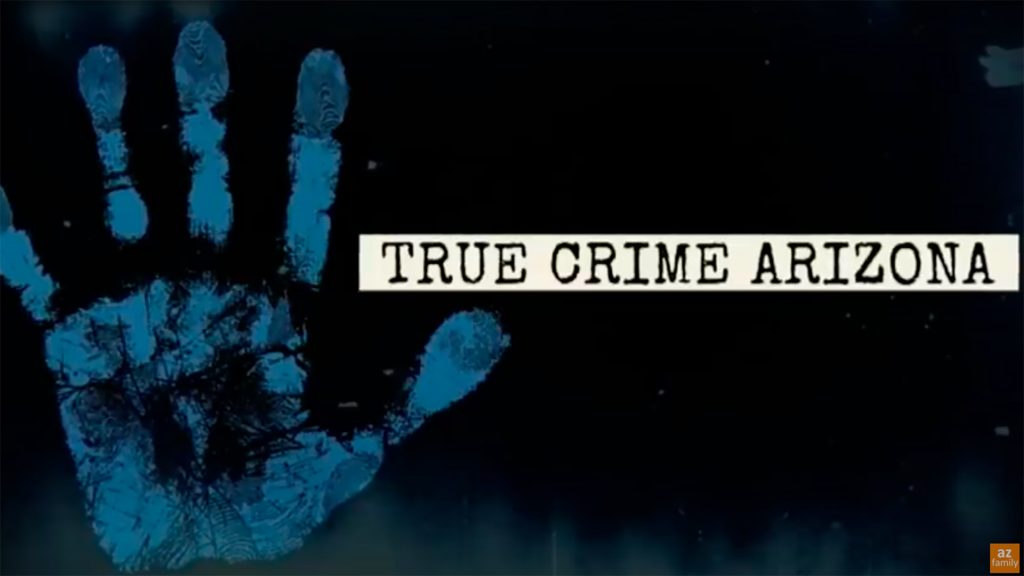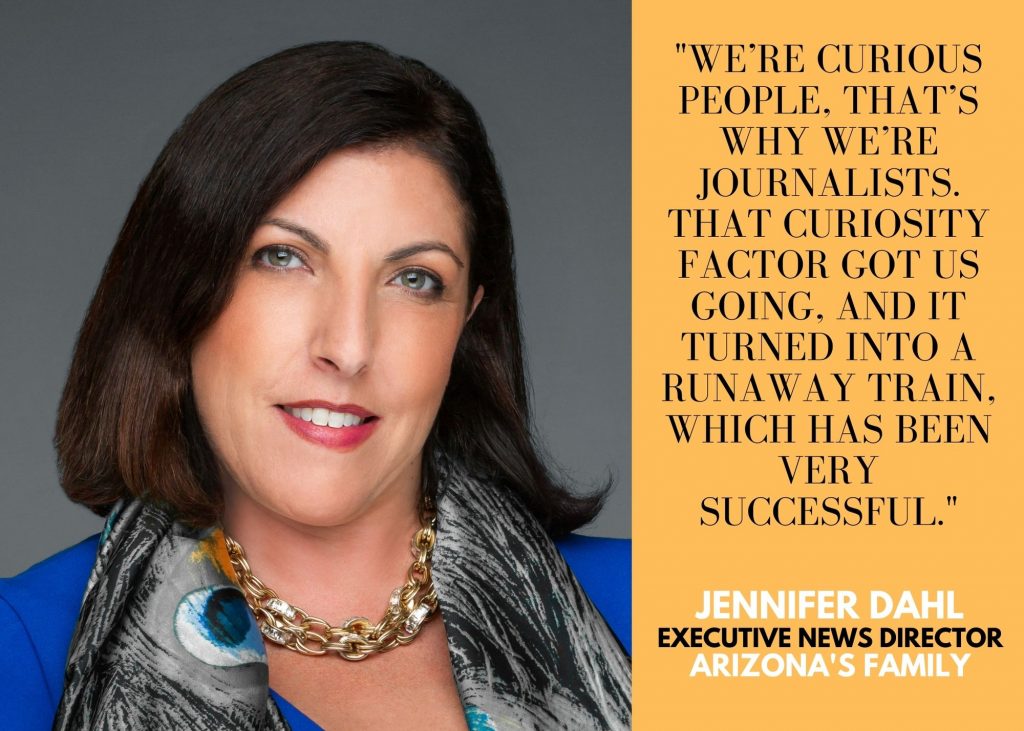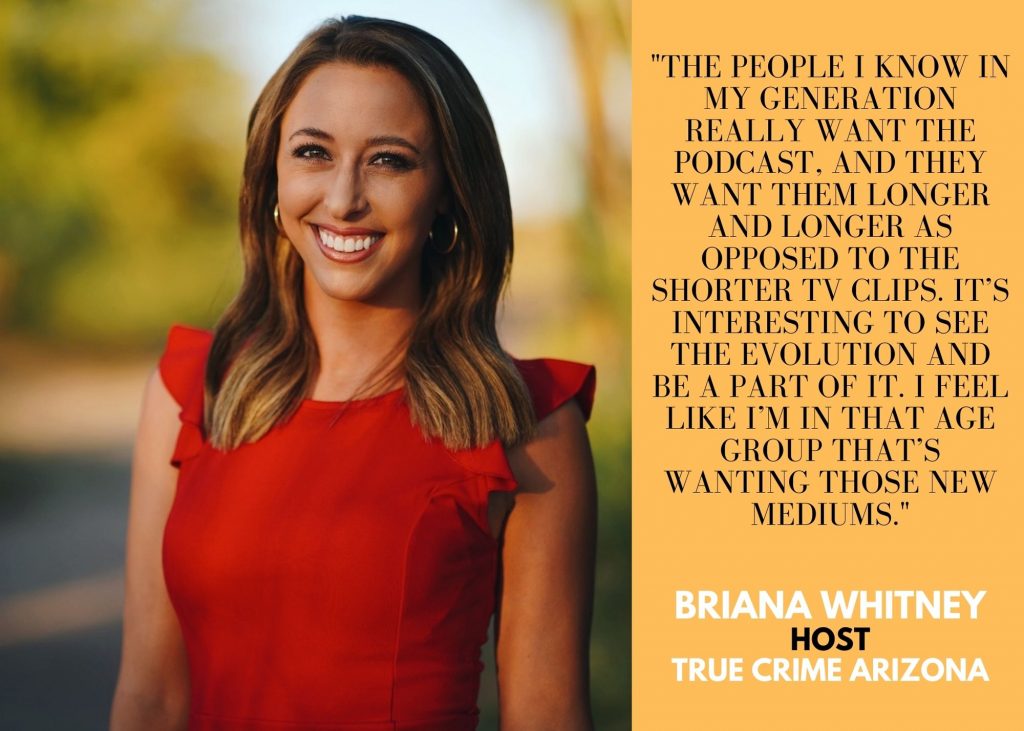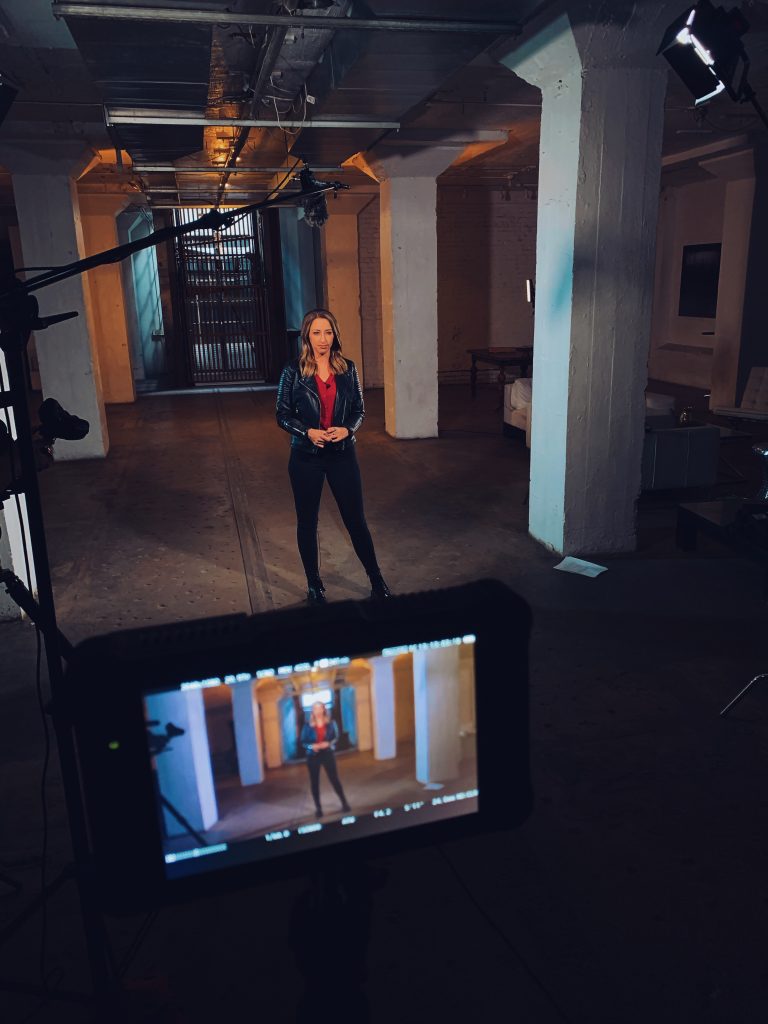
Picture this.
Rugged mountain ranges, tall saguaros, deep canyons, and endless sunshine. These are features of the quintessential American West. Ordinary sights Arizonans wake up to every morning.
“There’s a lot of desert charm,” said Briana Whitney, a general assignment reporter for the Meredith-owned Phoenix news operations collectively branded as Arizona’s Family.
But as Whitney discovered, that charm can be deceiving.
A Scottsdale father wanted by the FBI for the murder of his family. A Phoenix woman accused of chopping up her friend’s body and taking it in a piece of luggage to Los Angeles. A seemingly perfect mother connected to six mysterious deaths. A body discovered in a man’s freezer near Prescott.
These are just a few of the dozens of solved and unsolved Arizona-based cases Whitney has covered along with fellow Arizona’s Family journalist Serjio Hernandez in the podcast and TV series True Crime Arizona. It’s a prime — or in this case, crime — example of newsrooms using in-depth original content to drive audience, revenue, and brand awareness.
It all started with an idea for a November 2019 sweeps piece.The station would take a look back at the infamous Robert Fisher case. “It’s probably one of the most talked about cases in this state because it’s so bizarre,” said Whitney. Police believe Fisher killed his wife and children in 2001, and then cut their Scottsdale home’s gas line, which caused the house to explode in flames.To this day, Fisher remains on the FBI’s Top Ten Most Wanted List, his whereabouts unknown. “What really interested me was I remembered that the current detective thought he was dead and the retired detective thought he was alive,” said Whitney.
The series started with a handful of seven-minute TV pieces on different cases, built into the evening newscast under the branding Unsolved Arizona. They hit pause due to the pandemic, but returned several months later with a broader focus and a new name, True Crime Arizona.”We morphed into both unsolved and solved, in terms of just bringing cases that were intriguing back to life,” said Whitney. But the big change came last November with the expansion to a popular new platform: a recurring podcast.
Listen to the Robert Fisher podcast episode
“We’re curious people, that’s why we’re journalists,” said Jennifer Dahl, the executive news director at Arizona’s Family. “That curiosity factor got us going, and it turned into a runaway train, which has been very successful.” So far the podcast has been downloaded over 200,000 times, with each of the top 10 episodes getting at least 7,000 individual downloads. According to recent data collected by Libsyn, the prominent podcast host, those download numbers place True Crime Arizona among the top 5 percent of podcasts.

Whitney, who is 28, has also observed its popularity anecdotally. “The people I know in my generation really want the podcast, and they want them longer and longer as opposed to the shorter TV clips. It’s interesting to see the evolution and be a part of it. I feel like I’m in that age group that’s wanting those new mediums,” said Whitney. “That’s also why I’ve loved doing the podcast: because there’s not a time limit, so that just breeds more details that we can put into the cases.”

While Whitney may have found her passion in long-form storytelling as the host of True Crime Arizona, she’s still a general assignment reporter for both Arizona’s Family stations, KTVK (3TV) and KPHO (CBS 5). Whitney takes calls for the series before work, in between live shots, anytime she can get a second in. Then she’ll request a day off with Hernandez to record all of the interviews with families, neighbors, police departments, anyone connected to the cases.


“It’s a delicate balance every day,” said Dahl. “At the end of the day, our bread and butter is live local TV on Channel 3 and Channel 5, and so we have to feed that beast.”
It may be a juggling act for the stations, but the series is part of a deliberate strategy to expand across platforms and attract new audiences. “We understand that there’s a generation that is very entrenched in podcasting. Then you have the genre of true crime, so this was an opportunity to be an entry point to the Arizona’s Family brand,” said Blanca Esparza, the station manager at Arizona’s Family. “We hope that they’re going to start to learn the brand, start to trust the brand, and when they need to consume news in a linear fashion, when they need to go see a newscast, they already know and are familiar with the brand. That’s how we create brand loyalists.”

Whitney and Hernandez still produce seven-minute TV versions of the longer cases for certain Friday night TV newscasts. They also combine multiple cases into 30-minute specials and produce True Crime Arizona documentaries airing on both CBS 5 and 3TV, generating additional ad revenue.
Watch the TV special Vanished Children
Beyond the financial possibilities, the team sees the series as an extension of the stations’ public service imperative.
“Could you imagine if you had a sister or a brother or mom or a dad who had been murdered, and you didn’t know what had happened to them? Wouldn’t you want to be able to sleep at night?” said Esparza. “That’s the mission for these guys ultimately, and why it is made for who we are as a brand. We want to provide closure to these families, because that’s the least we can do.”
“We want to get the case back out there so people know about the memory, new theories, and information to solve it. We want to bring light to it again,” said Whitney. “I think that touches these families more than anything — that this community and our station has not forgotten about them.”
That’s exactly what happened with one case this year. In 1982, a young woman’s body was found on the side of a highway in northern Arizona on Valentine’s Day. For about 40 years, this Jane Doe remained nameless, except for the nickname “Valentine Sally.” But, about two weeks after the station’s True Crime Arizona episode aired on TV in February, police identified the body as Carolyn Eaton through DNA testing.
Whitney believes that her team’s continuing focus helped spur the police to action. “We were able to give our Sally a name, “ said Whitney. “Sometimes just asking departments questions can light a fire under them to relook at something or put some of their resources or funding back towards trying to make identifications, retesting DNA, things like that. I think that was probably our most proud moment so far in this series, just feeling like we may have played a part in helping to partially solve a cold case.”
Listen to the podcast on Valentine Sally
While the investigations may pay off, they are undoubtedly time consuming. Each case takes at least a month, if not several, to produce. But, since the stories are evergreen, the producers create a backlog of content and re-release episodes on case anniversaries (as they did in April near the anniversary of the murder of Robert Fisher’s wife and children).
The team generates additional content — and adds a fresh element of transparency — by taking podcast listeners behind the scenes. Another journalist at Arizona’s Family, Kris Pickel, turns the tables on Whitney and Hernandez and interviews them about their experience on a specific case. “In traditional journalism, we don’t really give our opinions, but in a podcast scenario like this, I think it allows us to give our viewers behind the scenes views of how it all happened, “ said Whitney. “They want to hear what you think, what you found bizarre, or what you found really interesting.”
Hernandez and Whitney recording a Q & A episode on the Robert Fisher case
“We’re not just a podcast company, we’re not just a documentary company, we don’t just do the local newscast, we do it all,” said Dahl. “That way we’re able to touch, and hopefully inspire somebody.”
But Dahl also believes the True Crime Arizona team can do more than just inspire.
“I’m waiting because I think Robert Fisher’s alive, and I think Briana’s going to find him.”
Get the Lab Report: The most important stories delivered to your inbox